Here is one of the earliest examples of Roger W. Smith Series 2 Open Dial* in white gold. It’s place in the chronology of the 12 Series 2 Open Dial, evidenced by the many transitional details on the case, dial, movement and low serial number, as well as the watchmaker's own recollection of the piece, makes this especially important. This one-owner watch comes with its original English oak Linley box.
Worth Reading
The Series 2 Open Dial itself represents a transitional point in the English watchmaker's work. First produced in 2010, its layout bears a strong resemblance to the watches Smith creates today, even while many of the examples possess characteristics typical of early Series 2 pieces. Within the 12 open dial examples that have been produced, there is a world of variation, with certain details serving to place an example in the chronology of this family of pieces. It merits noting at this point that some open dial Series 2 were later sold under the designation of the Series 5.
This example bears the serial number 4 and wears a 40mm white gold case. While earlier Series 2 cases are marked by shorter lugs and more rounded cases, referred to as Mk 1 examples, this features a more transitional version. The lugs are marginally longer, while the three-part case is less rounded in profile. It was the sixth open dial Series 2 made.
The dial – with its frosted and gilded plates, gold chatons and heat-hued screws – features a host of transitional features chief among which is the cartouche that bears the brand mark. While earlier examples featured the brand mark engraved directly onto the baseplate visible on the dial side, typically between 12 and 1 o’clock, this particular example wears it on a cartouche suspended from the satiné circulaire chapter of minutes. No more than three examples of the Series 2 Open Dial, including this one, wear this layout. Enthusiasts will recognise that this cartouche would later be placed in top half the of the dial, independent of the chapter. The serial number, also often engraved on the baseplate on the dial side in earlier pieces, is between 8 and 9 o’clock; in later examples this number ceases to appear on the dial side.
The wide chapter of minutes is itself of note. It features engraved minutes and Arabic numerals at five-minute intervals. Some early examples also feature a thinner chapter, with floating Arabic minutes at 10-minute intervals while later examples wear floating Roman hour markers, more in line with the manufacture’s current aesthetic. In fact, Roger Smith notes that this example was the last one made before the transition to floating Roman numerals.
Both scalloped hour and minute hands, as well as the subsidiary seconds hand, are heat-blued, as is the one that indicates the power-reserve at the 10 o'clock position. The large, sub-seconds register at 6 o'clock is encircled within a grained silver seconds chapter with drilled dots to mark the seconds.
Visible through the display caseback is a suitably traditional-looking manual-wind calibre featuring the very earliest variant of the Mk I single-wheel Co-Axial escapement, Smith’s first advancement on his mentor, George W. Smith’s invention. It is understated and typically English, wearing frosted finishing in a gilt shade, visually punctuated by heat-blued screws. A raised barrel bridge and balance cock add depth to the movement.
It’s transitional quality finds expression in the movement decoration as well. Same as those on the dial, the engravings on the three-quarter plate are also the work of master engraver Charles Scarr, who worked closely with Daniels. Engraved on the plate affixed to the three-quarter plate are the brand mark, “Isle of Man” and the year of manufacture in Roman numerals while the serial number is engraved directly onto the three-quarter plate.
This is different from earlier examples which featured these details applied directly onto the three-quarter plate, with the raised plate reserved often for intricate floral engravings. In latter examples, such details, as well as the triskelion motif of the Isle of Man, were engraved on raised cartouches screwed on to the movement. This is typical of movements featuring the Mk II version of Smith's single-wheel variant of the Co-Axial escapement.
All in all, this represents a significant chapter in Roger W. Smith’s early work and should be of interest to anyone who has followed his illustrious career to becoming the flag-bearer for British high horology. Says Smith of this piece: “Back then we were formulating ideas for what an open dial Series 2 would look like. We tried different approaches and this example, with the full chapter of Arabic numerals, was one of the earliest iterations. While since then the floating Arabic numeral has become closely associated with the Series 2 Open Dial, it is reassuring to look back on an early example like this one and know that what we did in those early days still holds up”.
This example comes from the original owner and includes its Linley presentation box, crafted from English oak, as well as a specification sheet. The piece has been serviced by the watchmaker in the recent past.
Specifications
Closer look
| Brand: | Roger W. Smith |
| Model: | Series 2 Open Dial |
| Movement: | manual-winding |
| Functions: | power reserve, hours, minutes, sub-seconds |
| Features: | openworked dial, blued steel hands, display back |
| Case material: | white gold |
| Case diameter: | 40 mm |
| Case thickness: |
13mm |
| Lug-to-lug: |
46mm |
| Crystal: | sapphire front & back |
| Strap: | Roger Smith black alligator strap, a brand new Roger Smith black alligator strap, original engraved white gold pin buckle |
| Lug width: | 20 x 18mm (curved) |
| Year: | c. 2012 |
| Accompanying materials: | Roger W. Smith Linley wooden box with key, Roger W. Smith polishing cloth, specification sheet, copy of original insurance valuation (anonymised) |
Condition
This Roger W. Smith Series 2 Open Dial is in very good condition throughout. Light scratches and scuffs are found throughout the case, bezel, and lugs, consistent with relative wear over time.
The frosted and gilded plates, gold chatons, and heat-hued screws on the dial are free from any imperfections, as are the heat-blue scalloped hour and minute hands. Similarly on the caseback, the frosted finishing, heat-blued, and rose gold accents are free from any imperfections. On the crown side of the caseback, light oxidation is present on the frosted movement just above the hand-engraved, unique individual watch number. The rose gold detailing behind the balance wheel shows attractive signs of oxidation. The watch is mechanically sound and has been serviced by Roger W. Smith in the recent past.
The set includes its handcrafted Linley box, topped with a hallmarked silver plaque denoting the manufacturer, model, and unique number of the watch. Inside is the key, an unused branded cloth and an unused black alligator Roger W Smith leather strap. The paperwork includes two A4-sized sheets of paper; one a sheet of specifications and the other is an anonymised copy of the insurance valuation for the watch, dated October 2012.
Warranty
The watch comes with a two-year warranty from A Collected Man, alongside a lifetime guarantee of authenticity.
We stand by the quality of all of our pre-owned watches and mechanical objects. If something goes wrong, we’ll always strive to remedy the situation in a timely manner and to the best of our ability. The satisfaction and trust of our clients is of the highest importance, to everyone at A Collected Man.
All of our pre-owned watches have undergone thorough, non-invasive mechanical inspections and have been serviced, if appropriate, to ensure that they meet our highest standards of timekeeping and functionality.
Our pre-owned watches, unless stated otherwise, are covered by either a full or a limited twenty-four month warranty. This excludes any damage sustained due to improper use or accident. Due to their age, some pre-owned watches should not be subjected to the same conditions as when new.
Any of our pre-owned watches which have been serviced by their respective manufacturer, will carry the manufacturer’s servicing guarantee. This is separate and supersedes, the standard warranty offered by A Collected Man. Please see our Terms & Conditions for further information. You can write to us directly at enquiries@acollectedman.com, for further clarification.
A Collected Man is also an authorised retailer for a number of watchmaking brands. These watches are covered by the warranty from the original manufacturer.
We offer complimentary worldwide delivery on our watches. If ordering from overseas, delivery will depend on the value of the timepiece and the destination. All import taxes and duties are the responsibility of the buyer.
If ordering from the UK before 1 PM, your watch will be sent the same working day. The courier will depend on the value of the watch, with all watches delivered the next working day.
Please note that pre-owned goods (in the United Kingdom) are subject to a marginal rate of VAT, which can not be reclaimed. For further information, please see here.
Enquire
Please fill out the details below and we'll be back in touch shortly. Thank you.
Join the List
Get notified as soon as new pieces from this brand are added to our collection.
The Evolution








The Tourbillon


Four Unique Pieces


The Genesis


Time-only watch


The movement


The Genesis
From the Bench, August 2017


Roger W. Smith Watches at A Collected Man


Articles
Read the Journal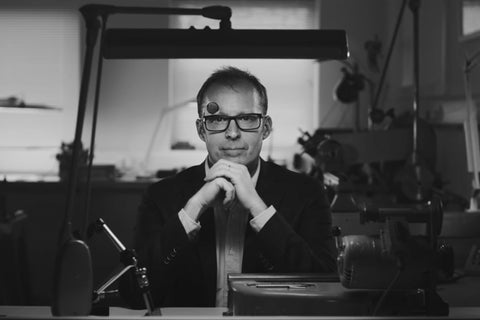
The Watchmaking Journey of Roger W. Smith
By Russell Sheldrake
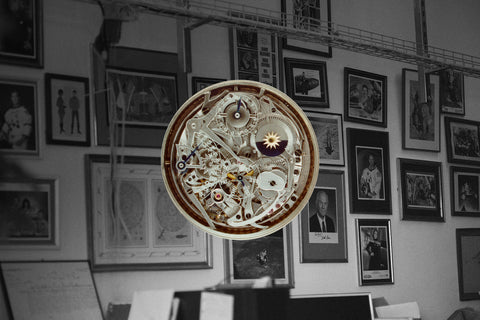
Watchmakers Look Back on their First Watch
By Josh Sims
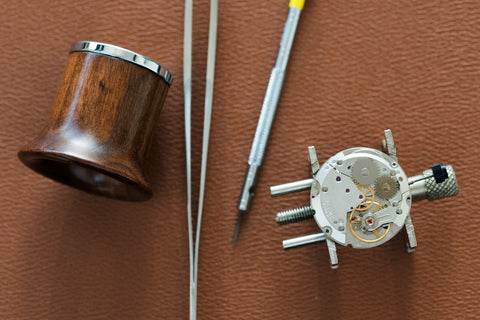
In Depth: Escapements
By A Collected Man

OMEGA Seamaster 70th Anniversary - Episode 2: The Watchmaker and his Seamaster
By A Collected Man

From the Bench: Roger Smith
By A Collected Man
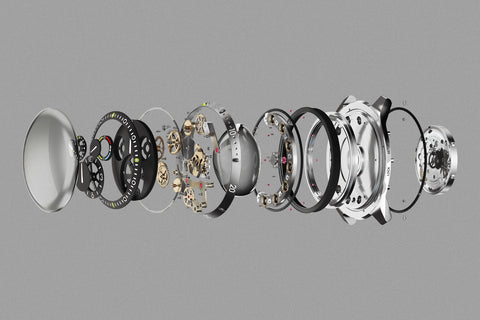
The blending of technology and tradition in the watch world
By Josh Sims
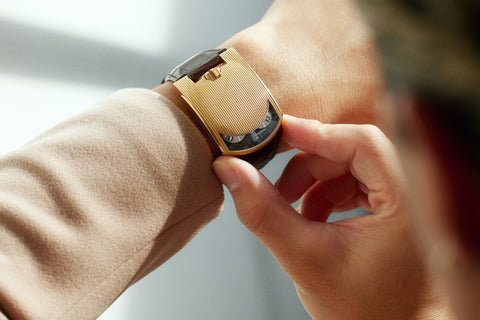
Independent Watchmakers Reinventing the Future
By Russell Sheldrake
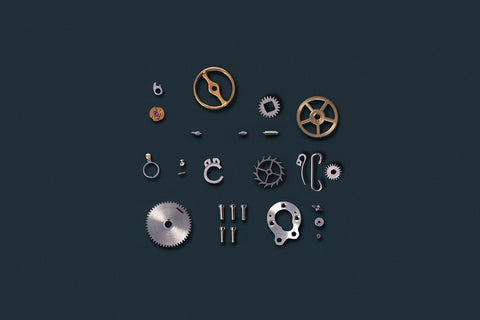
Five Watchmakers Pick Their Favourite Movement - Part II
By Russell Sheldrake
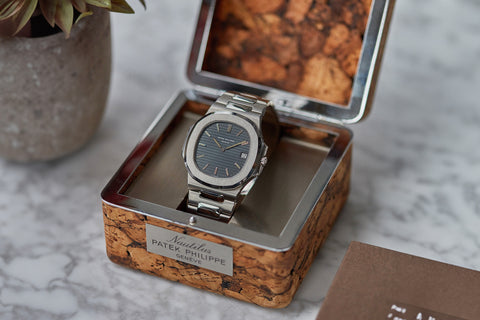
Our favourite watches boxes and why they matter
By A Collected Man
Want to hear more?
Sign up and be the first to hear about Roger W. Smith watches.






















































































































































































































































